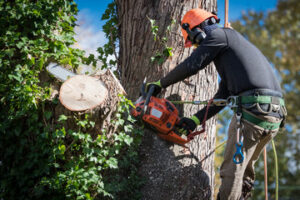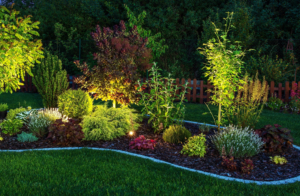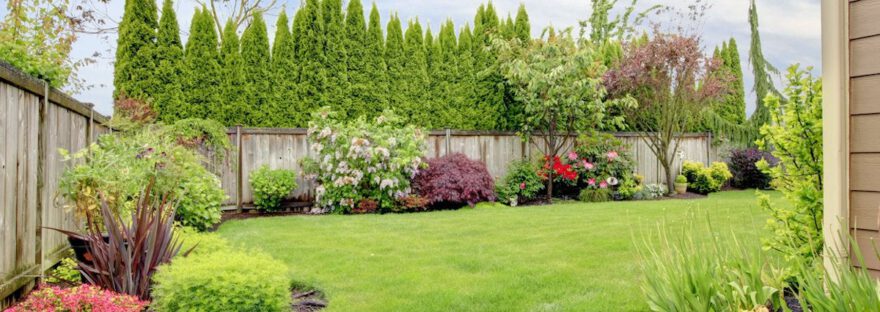Tree Removal is a complex process that requires refined techniques, specialized equipment, and expert arborists. Other factors that determine the cost of removing a tree include its size and location.

For example, trees near roads and walkways must be removed in a way that safeguards people and property. A hazardous tree with structural damage or disease may also require extra time and labor to remove.
The process of tree removal requires a lot of planning. It involves examining how the dead or damaged tree will affect surrounding plants and structures, and ensuring that the work is carried out safely to prevent damage to people or property. Tree removal services also take into account the impact of their work on wildlife and local ecosystems. They also have to consider the potential cost of the project, including the costs of any necessary permits.
Once the professionals have completed their assessment of the tree and its surroundings, they can begin the actual cutting and removal process. This is where their expertise, knowledge of tree physics, and specialized equipment come into play. They are able to remove the tree without harming its roots or causing any damage to buildings or other trees in the vicinity.
Before the professionals arrive, it’s important to clear your yard of any obstacles that might get in their way. This includes lawn furniture, potted plants, or anything else that could be harmed by the movement of the tree or its debris. If you can’t move these items, cover them with sheets or blankets to protect them from flying debris. You should also keep pets and children away from the area for the duration of the removal process. If they get loose and run amok, it can create a major safety hazard for everyone involved.
It’s also a good idea to make sure there’s plenty of room for the tree service workers to park their vehicles and equipment on your property. There’s likely to be a lot of wood and equipment being hauled around, and it can be difficult to squeeze vehicles in and out when they’re moving large sections of a tree or clearing the stump left behind.
If you have neighbors, it’s a good idea to let them know that the tree removal process will be taking place. This will help ensure that they are aware of the potential hazards and are willing to move their cars if needed to create more space. It will also give them an opportunity to prepare their yards and protect their belongings from falling debris.
Equipment
Trees provide natural beauty to your home’s landscape and can also boost the value of your property. However, they can also be a risk to your house or other structures in your yard when they become damaged or dead. In addition, they can impede the growth of other shrubs and plants. That’s why it’s best to have troublesome trees removed before they cause severe damage or even become a safety hazard.
When removing trees, you need to have the right equipment to perform the task safely and effectively. The equipment should be specialized for the type of tree you are cutting and should also be upgraded periodically. This will ensure that the equipment is always up to date and that it provides you with better results.
There are many different types of tree removal equipment available on the market, but a few basic pieces should be included in every toolkit. For example, all tree professionals should have a good quality chainsaw. The best option is a gas-powered chainsaw, as it eliminates the need for extension cords. Another essential piece of equipment is a stump grinder, which grinds down tree stumps and roots to make them easier to remove.
For more complicated jobs, you will need a ladder and climbing equipment to get to high parts of the tree. A rigging system can also be useful, which helps you dismantle the tree and lower it to the ground. Finally, a wood chipper can turn the branches and trunks into small chips that can be used as mulch after they are cut up.
Some jobs may require a crane, which is usually more expensive than other methods of tree removal. You will need to get a permit before using a crane, and the process can take longer. However, this method of removal is safer and can reduce the risk of damaging nearby structures. It can also be useful for removing large trees that have been damaged by storms or other factors.
Safety Goggles or Helmets
When working with a chainsaw, it is vital to wear protective equipment for the eyes and head. This includes a helmet and safety goggles or a face shield to protect against wood chips, debris and potential head injuries. Also, heavy gloves and protective clothing that covers the extremities are important to prevent cuts and puncture wounds. Leg protection is essential when climbing a tree to reduce the risk of slipping and falling and should be made of cut resistant material that covers from the thigh to the top of each boot.
When the work begins, the entire team should conduct a safety briefing to discuss the hazards of the job. This should include a discussion about the equipment that is going to be used and how it will be operated, including any risks associated with its use. During this process, the team should determine which areas are hazardous and make plans to ensure that these are not worked in. It is also crucial to identify any other risks that could arise during the course of the work, such as electrical lines or other people in the vicinity.
The team should also assess the health of the tree to determine if it is at risk of falling, which could result in serious injury to anyone nearby. This is done by looking for signs such as fungal growth on the bark, dead branches or a hollow trunk. The tree’s structural integrity must be considered as well, which is why it is a good idea to hire professionals with the right experience.
While a hard hat is an essential piece of PPE for tree removal, some workers choose to wear a specialist helmet designed for arborists. These have a special mesh or polycarbonate visor that provides extra eye protection, which prevents twigs and wood chips from penetrating the eyes. Some of these visors also have ear defenders attached, which help to lower noise levels caused by chainsaws.
Safety goggles are a more appropriate choice for high dust environments than safety glasses, as they offer a tight seal against the face, which helps to keep dust particles away from the eyes. These are a better choice for high-risk activities such as chemical cleaning, hazardous chemical use, brick/stone/concrete masonry, metal grinding and turning and spray painting, where dust may fly into the eyes at a high velocity.



